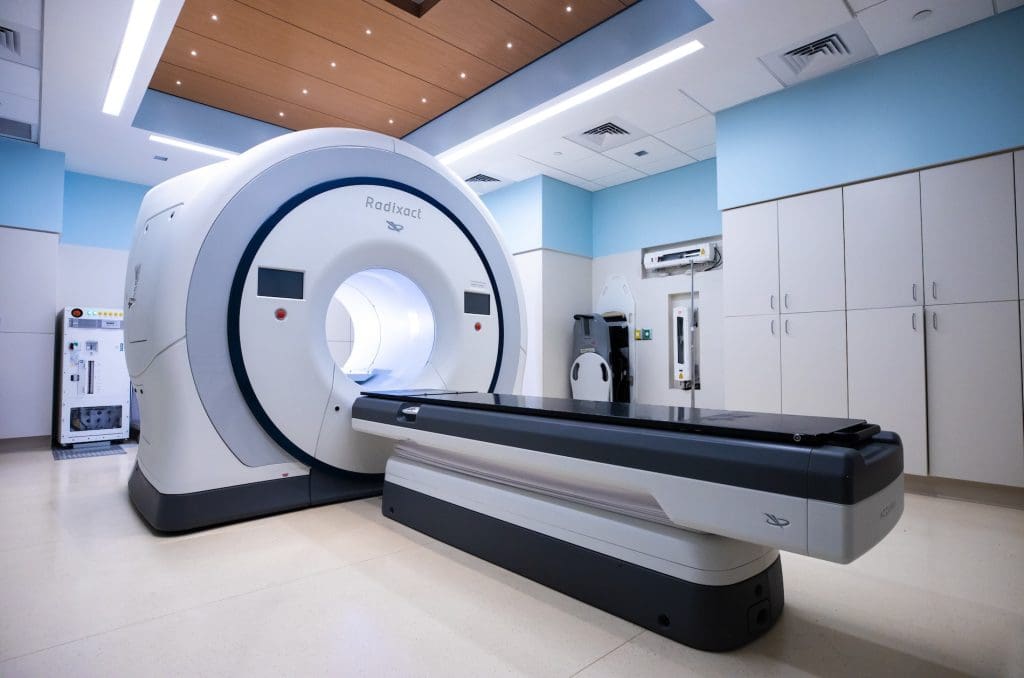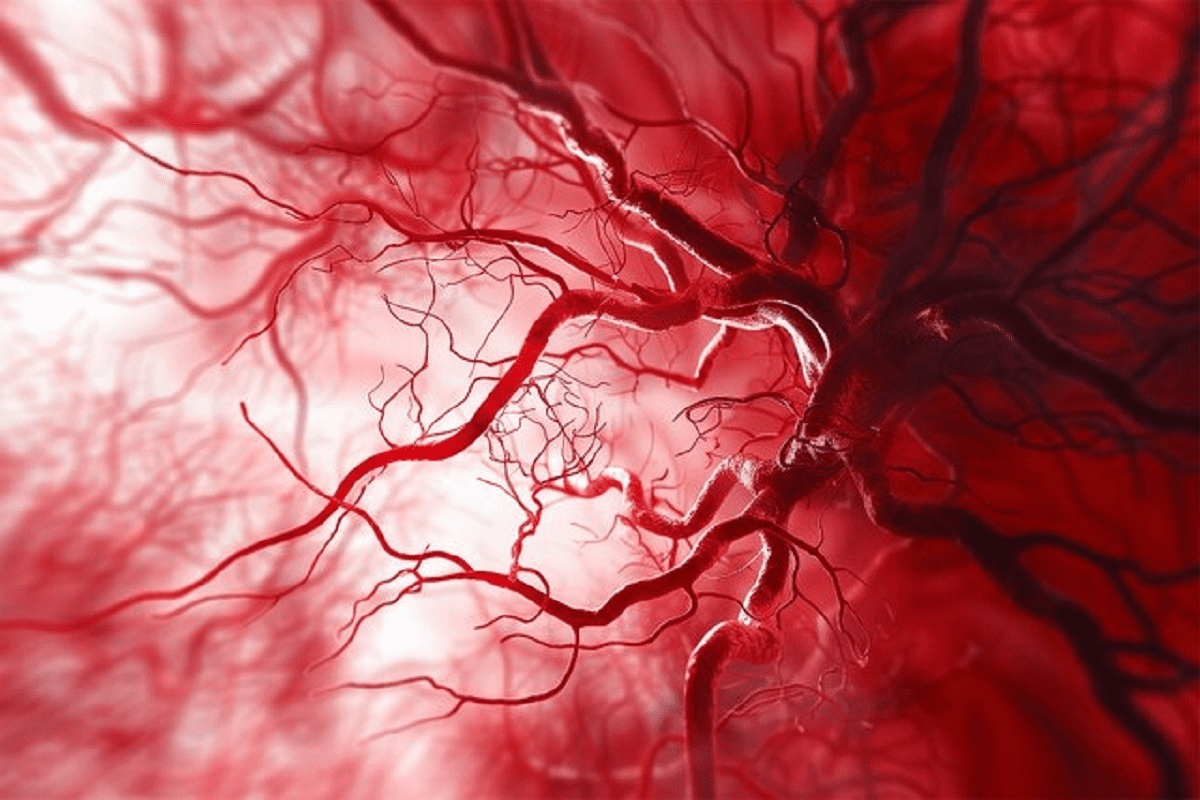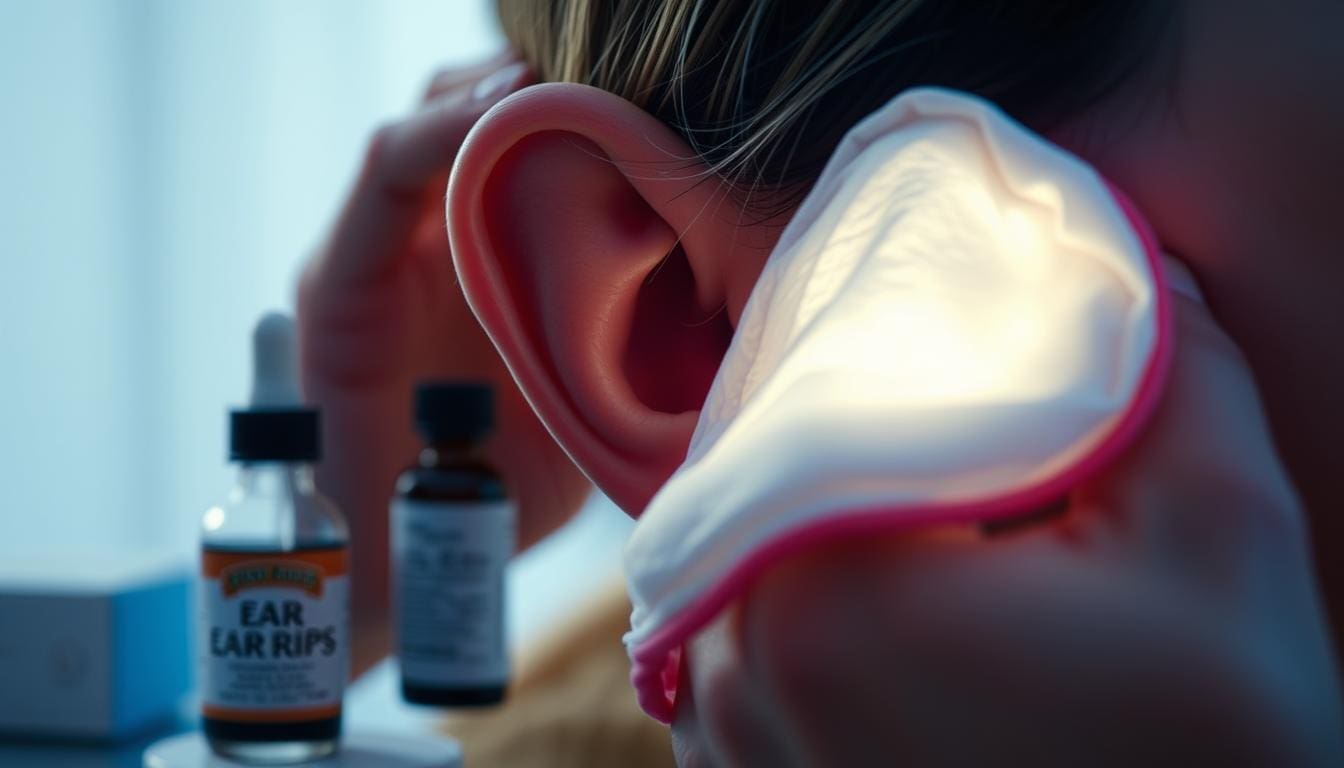Last Updated on November 27, 2025 by Bilal Hasdemir
Nearly 10% of Americans have claustrophobia. This makes PET scans seem scary. A PET scan helps doctors find health problems like cancer and brain issues.
The PET scan machine is a closed space. This can make people with claustrophobia very anxious. But, there are ways to make it easier.
This article is for those who are claustrophobic and need a PET scan. It explains the scan and gives tips to help you through it.
Key Takeaways
- Understanding what a PET scan is and its importance.
- Learning how claustrophobia can affect the PET scan experience.
- Discovering ways to manage claustrophobia during a PET scan.
- Exploring alternatives or preparations that can help.
- Knowing what to expect during and after the scan.
Understanding PET Scans: What They Are and Why They’re Important

PET scans, or Positron Emission Tomography scans, are key in medical imaging. They show how the body’s cells work. This helps doctors find and treat diseases like cancer, brain issues, and heart problems.
Definition and Purpose of PET Scans
A PET scan uses a special dye to see how the body’s cells work. It helps doctors understand the body’s functions better. This makes it easier to diagnose and keep track of health issues.
The radioactive tracer in PET scans is a sugar molecule with a radioactive tag. It goes to areas where cells are growing fast, like in tumors. The PET scanner picks up the radiation from this dye. It then makes detailed pictures of what’s happening inside the body.
How PET Scans Differ from CT Scans and MRIs
PET scans are different from CT scans and MRIs. While CT scans and MRIs show the body’s structure, PET scans look at how cells work. This gives a unique view of the body’s inner workings.
| Imaging Technique | Primary Use | Key Features |
| PET Scan | Metabolic activity | Uses radioactive tracer to visualize metabolic processes |
| CT Scan | Structural imaging | Uses X-rays to create detailed cross-sectional images |
| MRI | Soft tissue imaging | Uses magnetic fields and radio waves to create detailed images |
Knowing the differences between these scans is important. It helps patients and doctors pick the best tool for each situation.
The PET Scan Procedure: What to Expect
Knowing what to expect during a PET scan can make it less scary. The PET scan process includes preparation, the scan itself, and recovery. Understanding these steps can help reduce anxiety.
Before the Scan: Preparation Requirements
Getting ready for a PET scan is important. You might need to fast for a while before the scan. It’s key to follow your healthcare team’s instructions to get accurate results.
- Avoid eating or drinking anything except water for the specified fasting period.
- Inform your doctor about any medications you are taking.
- Remove any jewelry or metal objects that could interfere with the scan.
You might need to arrive early to do paperwork or change into a hospital gown. It’s a good idea to bring a book or listen to music while you wait to relax.
During the Scan: Step-by-Step Process
During the PET scan, you’ll lie on a table that slides into the scanner. The process is simple:
- A small amount of radioactive tracer is injected into a vein, usually in your arm.
- You will be asked to wait for a short period to allow the tracer to circulate through your body.
- The table will then move into the scanner, and the scan will begin.
- You will need to remain very quiet during the scan, which usually takes about 30 minutes to an hour.
The scanner will rotate around you, capturing images of the tracer. You may hear a humming or whirring noise during the scan, but this is normal.
After the Scan: Recovery and Precautions
After the scan, you can usually go back to your normal activities unless your doctor says not to. It’s recommended to drink plenty of water to help flush the tracer out of your system.
Some people might feel a bit tired or uncomfortable at the injection site. These effects are usually temporary and should go away on their own.
Your doctor will talk to you about the scan results at a follow-up appointment. It’s important to follow any extra instructions from your healthcare team about recovery and what to do next.
Inside the PET Scan Machine: Design and Environment
The PET scan machine is a large, cylindrical device. It can make those with claustrophobia anxious. Knowing its design and environment helps patients prepare for the procedure.
Physical Dimensions and Space Constraints
PET scan machines are usually enclosed. They have a cylindrical tunnel for patients to lie in during the scan. The size can differ, but most have a bore diameter of about 70 cm (28 inches). This can cause claustrophobic reactions in some.
The space inside the PET scan machine is a big worry for claustrophobic patients. The machine’s design means patients must stay very quiet in the enclosed tunnel. This can make feelings of being trapped worse.
Duration: How Long Does a PET Scan Take?
The time a PET scan takes varies. It depends on the scan type and the body part being scanned. Most scans last between 60 to 90 minutes, but some can take longer.
| Type of PET Scan | Typical Duration |
| Whole-body PET scan | 60-90 minutes |
| Brain PET scan | 30-60 minutes |
| Cardiac PET scan | 30-60 minutes |
Knowing the pet scan duration helps claustrophobic patients prepare. Knowing what to expect can lower anxiety and make the experience less scary.
In conclusion, the PET scan machine’s design and environment can be tough for those with claustrophobia. But, understanding the physical dimensions, space, and scan time can help manage anxiety. This knowledge helps patients cope better with the procedure.
Understanding Claustrophobia and Medical Imaging
Claustrophobia is a fear of being in small, enclosed spaces. It can make medical imaging tough for those who have it. Techniques like PET scans are key for health checks but can be scary for claustrophobic people.
It’s important to know what causes claustrophobia in medical settings. This helps in giving the right care and support to those who need it.
What Causes Claustrophobia During Medical Scans
The setup of medical imaging equipment can trigger claustrophobia. The tight spaces of PET scan machines can make people anxious.
There are several reasons why claustrophobia happens during scans:
- Fear of Enclosed Spaces: Being in a small, closed space is the main fear.
- Past Experiences: Bad experiences with medical imaging can make claustrophobia worse.
- General Anxiety: People who are naturally anxious might feel claustrophobic more easily.
Common Triggers in the PET Scan Environment
Several things in the PET scan area can cause claustrophobia:
| Trigger | Description |
| Enclosed Space | The PET scan machine is a tube that’s mostly enclosed. |
| Lack of Visibility | Not being able to see well during the scan makes it feel more cramped. |
| Noise and Movement | The sounds and movements of the machine can be scary for some. |
Knowing these triggers helps doctors and nurses make PET scans less scary for claustrophobic patients.
Recognizing Claustrophobic Reactions During a PET Scan
PET scans are important for diagnosis but can cause claustrophobic reactions in some. It’s key to know the signs to manage them well.
Physical Symptoms of Claustrophobia
Claustrophobia can show up in different ways during a PET scan. Common signs include:
- Rapid Heartbeat: An increased heart rate is a typical response to the anxiety caused by confined spaces.
- Sweating: Excessive sweating can occur due to the body’s stress response.
- Trembling or Shaking: The physical manifestation of fear can cause uncontrollable shaking.
- Nausea: Feeling queasy or nauseous is another common physical symptom.
Psychological Responses to Confined Spaces
The psychological impact of claustrophobia during a PET scan can be significant. People may feel:
- Intense Fear: A profound fear of being in enclosed spaces can be overwhelming.
- Panic Attacks: Sudden onset panic can occur, characterized by extreme anxiety and fear.
- Disorientation: Feeling disconnected or disoriented due to the confined environment.
When to Alert Medical Staff About Your Distress
Telling the medical staff about your distress is important during a PET scan. If you’re experiencing any of the following, alert the staff right away:
| Symptom | Description |
| Severe Panic | If you’re having a panic attack or feeling extreme anxiety. |
| Physical Discomfort | If you’re experiencing significant physical symptoms like rapid heartbeat or nausea. |
| Feeling Overwhelmed | If you feel you cannot continue with the scan due to distress. |
By recognizing these symptoms and talking to medical staff, you can manage your claustrophobia better during a PET scan.
Medical Solutions for Claustrophobic Patients Needing PET Scans
For those who fear enclosed spaces, PET scans can seem scary. But, there are ways to make it easier. Claustrophobia makes it hard to get through the PET scan. Luckily, there are medical options to help.
Medication Options to Reduce Anxiety
Doctors might give medication to help with anxiety during a PET scan. Benzodiazepines are often used because they calm the mind. But, it’s important to talk about the good and bad sides with a doctor.
- Alprazolam (Xanax): It works fast to help with sudden anxiety.
- Lorazepam (Ativan): This is good for feeling sleepy before the scan.
Always listen to your doctor and tell them about your health history. This helps keep you safe.
Sedation Alternatives for Severe Cases
For those with really bad claustrophobia, there are other options. Conscious sedation keeps you awake but relaxed. This way, you can talk to the doctors during the scan.
“Conscious sedation has changed how we help anxious patients. It’s a safe and good way to do the PET scan without too much stress.” – Dr. Jane Smith, Radiologist
Other choices include deep sedation and general anesthesia. These make you almost or completely asleep. They’re used only when needed because they carry risks.
With these medical options, people with claustrophobia can get through PET scans more easily and with less worry.
Open PET Scan Options: Are They Available?
Traditional PET scan machines can make people feel anxious because of their small spaces. But, new technology has brought about wider and more open designs. These open PET scan options are great for those who get scared in tight places.
Types of Open or Wide-Bore PET Scanners
Open or wide-bore PET scanners are made to give patients more room and comfort. They are different from old PET scanners because they have a bigger diameter. This makes it easier for people who are scared of small spaces to get scanned.
Key Features of Open PET Scanners:
- Larger bore diameter for increased comfort
- Advanced technology to maintain image quality
- Potential for reduced anxiety during the scan
Limitations and Availability of Open Design Machines
Open PET scan machines have many good points, but they also have some downsides. Not all hospitals have these machines. Also, the pictures might not be as clear as those from traditional PET scans.
| Feature | Traditional PET Scan | Open PET Scan |
| Bore Diameter | Narrower (typically around 70 cm) | Wider (up to 90 cm or more) |
| Patient Comfort | Less comfortable for claustrophobic patients | More comfortable due to increased space |
| Availability | Widely available | Limited, depending on the facility |
In conclusion, open PET scan options are a big step forward for people who are scared of small spaces. They offer a more relaxed and less scary experience. Even though there are some limits, these machines are a great choice for those who need them.
Psychological Techniques to Manage Claustrophobia During a PET Scan
For those with claustrophobia, a PET scan can seem scary. But, there are ways to handle it. Claustrophobia makes it hard to stay calm in tight spaces. Luckily, there are strategies to make it easier.
Breathing Exercises and Relaxation Methods
Breathing exercises and relaxation techniques can help. Deep breathing calms the body and mind. It helps reduce anxiety and panic.
Diaphragmatic breathing is a good method. It focuses on expanding the belly, not the chest. This can be very helpful.
Progressive muscle relaxation also helps. It involves tensing and relaxing muscles to release tension. Combining these methods can help patients deal with the PET scan machine.
Visualization and Distraction Techniques
Visualization and distraction techniques are also useful. Visualization lets you imagine a peaceful place. This can distract you from the tight space.
Distraction methods like listening to music or repeating a calming phrase can also help. Some places offer headphones to help with this.
Cognitive Behavioral Approaches
Cognitive behavioral therapy (CBT) offers lasting benefits. CBT helps change negative thoughts about tight spaces. This can make the PET scan environment less scary.
| Technique | Description | Benefits |
| Breathing Exercises | Deep, controlled breathing to calm the nervous system | Reduces anxiety, promotes relaxation |
| Visualization | Imagining a peaceful, safe environment | Distracts from immediate anxiety, promotes calm |
| CBT | Identifying and challenging negative thought patterns | Long-term reduction in claustrophobic responses |
Using these techniques can make PET scans less stressful. It helps individuals with claustrophobia manage their anxiety better.
How Medical Staff Can Help Claustrophobic Patients
Effective communication and accommodations are key to helping claustrophobic patients navigate PET scans successfully. Medical staff play a vital role in providing the necessary support to ensure a smooth and stress-free experience.
Communication Strategies Between Patients and Technicians
Clear and empathetic communication is vital for reducing anxiety in claustrophobic patients. Technicians should explain the PET scan procedure in detail, addressing any concerns the patient may have. Open dialogue helps in understanding the patient’s fears and allows for tailored support.
Patients should share their claustrophobic triggers and any previous experiences that may influence their anxiety levels. This information helps medical staff develop a personalized plan, improving the overall experience.
Accommodations and Modifications to Standard Procedures
Medical facilities can offer various accommodations for claustrophobia to make PET scans more comfortable. This includes using open or wide-bore PET scanners, which offer a more spacious environment. Also, allowing a companion to accompany the patient during the scan can provide emotional support.
In some cases, modified pet scan procedures may be implemented. This could involve adjusting the scan time or providing regular breaks during the procedure. Sedation or anti-anxiety medication may also be considered, under the guidance of a healthcare professional.
By understanding the needs of claustrophobic patients and adapting procedures, medical staff can significantly reduce anxiety. This improves the overall PET scan experience.
Preparing for Your PET Scan When You Have Claustrophobia
If you have claustrophobia, a PET scan doesn’t have to be scary. Getting ready in advance can really help. Knowing what to expect and taking steps ahead of time can make things easier.
Pre-Appointment Discussions with Your Doctor
Talk to your doctor about your claustrophobia before the PET scan. They can offer advice on how to handle your anxiety. They might suggest ways to help you relax or even sedation.
Facility Visit Before the Actual Scan
Going to the PET scan facility before your scan can be helpful. Many places offer tours or visits to help you feel more at ease. It’s great for those who are claustrophobic, as it lets you see the setup and ask questions.
Creating a Personal Coping Plan
Creating a coping plan is a good idea for managing claustrophobia during a PET scan. Your plan could include deep breathing, visualization, or ways to tell the staff if you’re feeling overwhelmed. Having a plan can make you feel more in charge.
“The more you prepare, the less anxiety you’ll experience.” This shows how important preparation is for your PET scan. By getting ready and working with your doctor, you can reduce your anxiety and have a successful scan.
“Preparation is the key to reducing anxiety and making the PET scan experience more tolerable for claustrophobic patients.”
Medical Expert
Real Patient Experiences: Overcoming Claustrophobia for PET Scans
Claustrophobia doesn’t have to stop you from getting medical imaging. Many patients have found ways to manage their anxiety and get PET scans done. Their stories offer valuable insights and inspiration to others facing similar challenges.
Success Stories and Coping Strategies
Many patients have shared their success stories. They talk about the coping strategies that helped them. For example, breathing exercises and relaxation techniques were often mentioned as effective ways to reduce anxiety during the scan.
Sarah found visualization techniques helpful. She imagined herself in a peaceful, open place, which greatly reduced her claustrophobic feelings. John, on the other hand, found comfort in having a supportive companion with him during the scan.
Lessons Learned from Challenging Experiences
While many patients have successfully managed their claustrophobia, others have faced challenges. Their experiences offer valuable lessons on what to avoid and how to improve the overall experience.
A common lesson learned is the importance of communication with medical staff. Patients who told their healthcare providers about their claustrophobia beforehand got tailored support and accommodations. This made the process smoother.
Also, some patients found that preparing mentally before the scan was key. This included understanding the procedure, knowing what to expect, and developing a personal coping plan.
By sharing their stories, these patients help themselves and others. They contribute to a broader understanding of how to manage claustrophobia during PET scans. This paves the way for others to follow in their footsteps.
The Future of PET Scan Technology for Claustrophobic Patients
The field of medical imaging is seeing big changes in PET scan technology. This is mainly to help claustrophobic patients. New designs and features are being added to PET scan machines. They aim to make patients more comfortable and less anxious.
Emerging Machine Designs and Patient Comfort Features
Developers are focusing on making PET scans more spacious and comfy. They’re working on designs that feel less cramped. This includes wider bores and more open setups.
Key Features of Emerging PET Scan Designs:
- Wider bore diameters to reduce claustrophobia
- Shorter scan times to minimize discomfort
- Improved patient support systems for enhanced comfort
- Advanced noise reduction technologies
These new features aim to make PET scans less scary for those who are claustrophobic. For example, Open PET scanners are a big step. They offer a more relaxed setting for patients.
| Feature | Current Technology | Emerging Technology |
| Bore Diameter | Typically around 70 cm | Up to 90 cm or more |
| Scan Time | Average 30 minutes | As low as 10-15 minutes |
| Patient Comfort | Limited support systems | Advanced support and cushioning |
Research on Reducing Scan Times and Confined Spaces
Scientists are working hard to make PET scans shorter and less cramped. They’re improving detector tech and image algorithms. This lets them get good images faster.
By combining these tech advances with designs that focus on patients, the future looks bright. These changes will likely make PET scans much better for claustrophobic patients.
Conclusion: Finding Your Path Through Claustrophobia to Necessary PET Scans
Getting a PET scan can be scary, even for those with claustrophobia. But, with the right steps and support, you can face your fears and get through it.
Learning about the PET scan process and finding medical help can help. Also, using psychological tricks and new scanner tech offers hope for those who find old scanners hard.
Talking openly with your doctor is key to a smoother experience. Share your worries and make a plan to cope. Many have found success in overcoming claustrophobia, showing it’s possible to get the care you need.
This article has given you a guide to deal with claustrophobia during a PET scan. By using these tips, you can take a big step towards beating your fears and having a successful scan.
FAQ
What is a PET scan, and how does it differ from other diagnostic imaging techniques?
A PET scan uses a special sugar molecule to find diseases like cancer. It shows how body tissues work, unlike CT scans and MRIs. This makes it great for checking on health.
How long does a PET scan take, and what can I expect during the procedure?
A PET scan can take 30 minutes to several hours. You’ll lie on a table that slides into the scanner. You must stay very quiet while the machine takes pictures.
What are the common triggers for claustrophobia during a PET scan?
The PET scanner’s small space and long scan time can cause claustrophobia. The noise and feeling trapped can also make people anxious.
Are there any medical solutions available to help manage claustrophobia during a PET scan?
Yes, doctors can give you medicine to calm down. Talking to your doctor before the scan can help find the best solution.
What are open PET scan options, and are they available?
Open PET scanners are bigger and more comfortable. Not all places have them, but some do. It’s good to ask when you book your scan.
How can I prepare for a PET scan if I have claustrophobia?
Talk to your doctor about your claustrophobia. Visit the place before the scan. Use relaxation and visualization to help you cope.
Can medical staff accommodate my needs if I have claustrophobia during a PET scan?
Yes, the staff is trained to help. They can let you bring someone, change the scan, or use an open scanner if they have one.
What are some psychological techniques to manage claustrophobia during a PET scan?
Deep breathing, muscle relaxation, and visualization can help. Try these before the scan to make them more effective.
Are there any emerging technologies or designs in PET scan machines that could help reduce claustrophobia?
Yes, new designs and technologies are being worked on. They aim to make scans shorter and more comfortable for patients.
How can I find out if a PET scan facility can accommodate my claustrophobia needs?
Ask the facility about their experience with claustrophobic patients. Find out if they have open scanners and what they can do to help. Talking to them before your scan can make it more comfortable.






